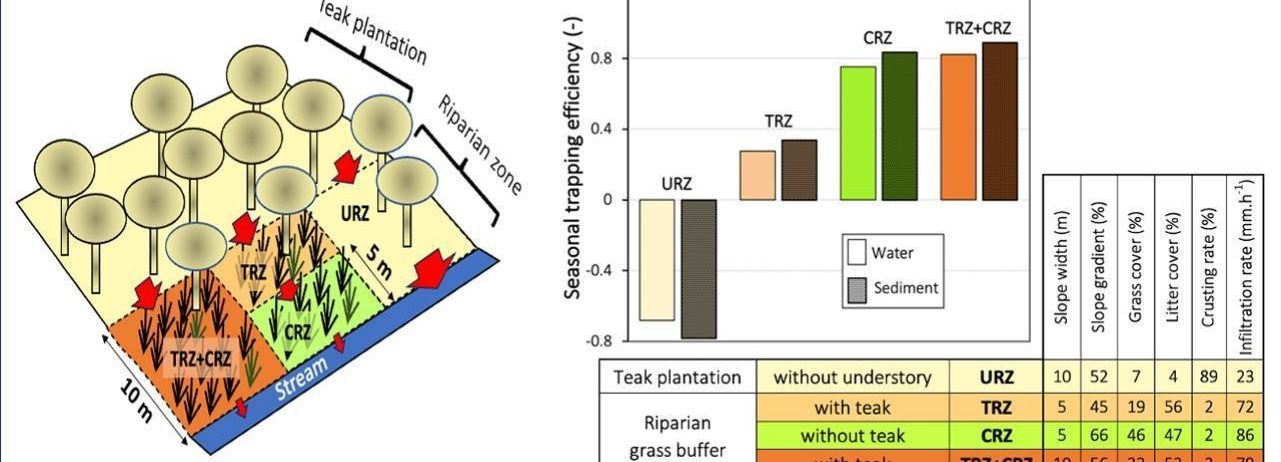Soil erosion in teak plantations: the efficacy of ‘buffer’ zones demonstrated
Considering the significant soil losses in teak plantations during heavy rains, IRD researchers (UMR GET and iEES-Paris) and their Laotian (DALaM and NUoL) and Cambodian (ITC) partners sought to measure the efficacy of grassed ‘buffer’ zones on surface runoff and soil loss downstream of these plantations.
In South-East Asia, teak plantations are often established on steep slopes where water run-off from the soil surface can lead to significant soil loss, particularly when the understory is removed. This phenomenon is responsible for a reduction in soil fertility and pollution of rivers, and is likely to be exacerbated by the increase in rainfall due to climate change. Against this backdrop, limiting soil erosion is a crucial challenge for maintaining the productivity of agro-ecosystems, the health of aquatic ecosystems and the sanitary quality of rivers.
Riparian buffer zones, which are vegetated areas of varying width along the banks of watercourses, reduce the speed at which water flows over the surface of the soil during storms, capture surface runoff and trap soil particles eroded from cultivated slopes. The results of this work indicate that 5 to 10 m grassed riparian strips limit the export of surface water and sediment downstream during small and large rainfall events. Rarely quantified under steep slope conditions (over 45%), this phenomenon probably occurs in many mountain agroecosystems in the humid tropics.
Article: Soil erosion control in tree plantations on steep slopes: Runoff water and sediment trapping efficiency of riparian grass buffer in mountainous humid tropics, Ecological Engineering, Volume 212, February 2025, 107537, https://doi.org/10.1016/j.ecoleng.2025.107537

















